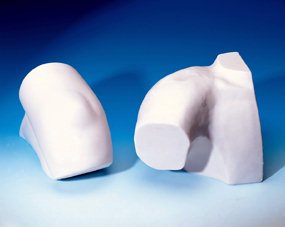It is not possible to understand about knee flexibility without a good working understanding of the anatomy of the knee joint, the knee cavity and the tissue folds lining the joint.
 First published in 2017, and reviewed August 2023 by Dr Sheila Strover (Clinical Editor)
First published in 2017, and reviewed August 2023 by Dr Sheila Strover (Clinical Editor)
The Anatomy of Knee Flexibility - course
- Introduction to the course on the Anatomy of Knee Flexibility
- Normal knee range-of-motion in men and women
- The joint capsule – why it is key to understanding so much about the knee
- Important structures inside the capsule – & their contribution to knee movement
By the end of this Section, you will understand what has motivated your instructor to build a course like this.
You will take your own first steps to accepting that knee anatomy is central to taking informed responsibility for what happens to your own knee during the rehabilitation process.
This course will describe to you those structures that allow a smooth and full motion of the knee, and particularly the soft tissue structures such as the joint capsule surrounding the cavity of the knee joint and the structures intimately related to the kneecap.
At the end of this course, you should be able to:
- understand the key role of the joint capsule, and how it both contains the internal structures and lubricates the process of joint movement
- see how important the patella is in relation to knee movement, and how intimately it is associated with the quadriceps muscle, and the tendons above and below it
- have an idea about the anatomy of the fat pad and the anterior interval
- realise that the cruciate ligaments both allow movement and contain movement
- know where the menisci are and what their role is with regard to knee movement and knee stability
INTRODUCTION TO COURSE: The Anatomy of Knee Flexibility - course
NEXT PART: Normal knee range-of-motion in men and women
-
 Just for interest, this is a photograph of the final production models (no longer being manufactured - but used on courses for more than a decade).
Just for interest, this is a photograph of the final production models (no longer being manufactured - but used on courses for more than a decade).